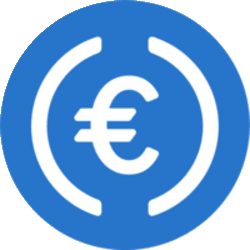Circle Becomes First Global Stablecoin Issuer Licensed Under EU’s MiCA Regulations for USDC
Contents
- Circle has become the first global stablecoin issuer to receive a license under the European Union’s new cryptocurrency regulations.
- The company announced that it has secured an Electronic Money Institution (EMI) license, a requirement to issue stablecoins under the EU’s MiCA regulations.
- “The days of operating in the shadows, expecting to freely reach consumers without oversight, are now over,” said Circle’s Chief Policy Officer, Dante Disparte.
Circle secures a key license under EU’s MiCA, paving the way for expanded stablecoin offerings.
Circle Gains Competitive Edge in European Market
Circle, the issuer of USDC, has historically trailed behind Tether’s USDT in terms of market cap. However, the newly acquired EMI license under the European Union’s Markets in Crypto-Assets (MiCA) regulations could potentially level the playing field. This licensing allows Circle additional time to expand its footprint in the European market.
Market Dynamics and Key Players
The stablecoin market is currently dominated by USDT, which commands a market cap of $110 billion, significantly ahead of USDC’s $32 billion. Despite this gap, Circle’s strategic alignment with MiCA regulations might offer new growth opportunities. With the license obtained from French authorities, Circle plans to introduce euro-backed EURC and USDC stablecoins into the European market through Circle Mint France.
Implications of MiCA Regulations
The MiCA (Markets in Crypto-Assets) regulatory framework, which came into force on June 30, signifies a considerable shift in the European cryptocurrency landscape. These reforms aim to foster transparency and accountability among crypto entities, ensuring that operations are no longer conducted in regulatory grey areas. Prior to the implementation of MiCA, several cryptocurrency exchanges delisted euro-backed stablecoins, including Tether’s EURT.
Operational Adjustments and Strategic Initiatives
Dante Disparte, Chief Policy Officer at Circle, elaborated on the implications of MiCA regulations for the crypto industry. He noted that these regulations necessitate a rethink of business models, as they impose stringent compliance requirements. By adhering to these new standards, Circle aims to position itself as a leader in regulatory-compliant crypto offerings, thus enhancing consumer trust and market penetration.
Conclusion
The acquisition of the EMI license under MiCA regulations marks a pivotal moment for Circle in its bid to expand within the European market. This strategic move not only grants Circle regulatory approval but also aligns its business operations with the stringent compliance requirements of the MiCA framework. As the regulatory environment matures, Circle’s proactive approach could potentially set new benchmarks in the cryptocurrency market, offering valuable insights and setting the stage for future growth.
Jocelyn Blake
Comments
Yorumlar
Other Articles
Bitcoin Surges to $93,888: How Venezuela-US Tensions Triggered a Crypto Rally
January 5, 2026 at 07:04 AM UTC
AI Data Centers May Strain Water Supplies in US High-Stress Regions
January 1, 2026 at 08:17 PM UTC
BitMine Boosts Ethereum Stake to 461K ETH, Eyes Network Share Growth
January 1, 2026 at 08:06 PM UTC
